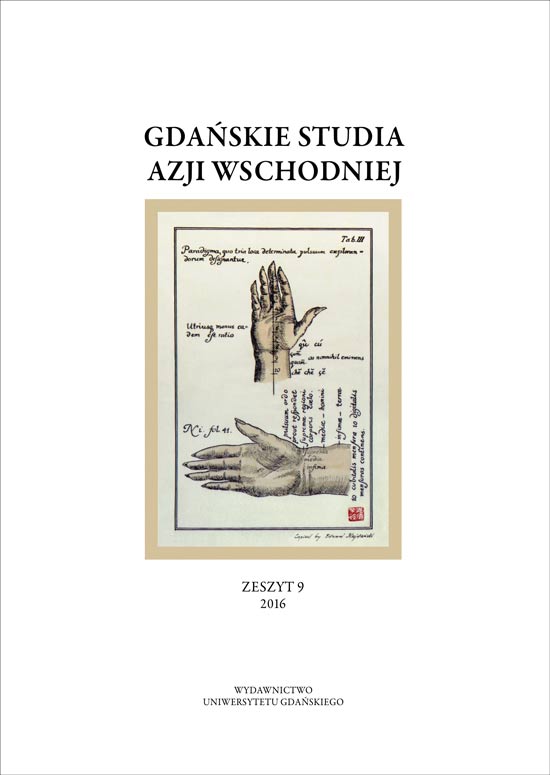Rozważania o krajobrazie kulturowym Japonii
Abstrakt
The subject of consideration is the cultural landscape of Japan. It should be noted that Japan is an island country and the vast majority of its area are mountains ranges that are unfavourable to any land development. Therefore, mainly coasts and softly shaped land areas are occupied. The geographical nature of Japan forces a huge concentration of population in a relatively small area. An analysis of diversity of the landscape of Japan lurks, in general, the image of chaos with the exception of unique and beautiful places. A justification of current state of cities is the World War II that brought destruction to Japan. The country quickly overcame the crisis and achieved significant economic growth. The buildings became a symbol of the development and free market system, however, at the cost of the landscape. Currently, state planning policy is aiming to correct mistakes of the past. In addition, there is a great emphasis on society that has a major role in shaping landscape. The improvement of the planning system in Japan, environmental protection and concentration to preserve the greatest acreage of green areas are another sources of optimism. Unfortunately, rural cultural landscape in Japan seems to be in a crisis.
Downloads
Bibliografia
M. Taniguchi, Japonia i Polska – fascynacje na odległość [w:] Świat z papieru i stali. Okruchy Japonii, red. M. Tanigiuchi, A. Watanuki, Warszawa 2010
R. Billsiö, N. Diab, Y. Takeuchi, Urban planning culture in Japan, s. 24; http://choros.epfl.ch (dostęp: 14.07.2014).
J. Bach-Głowińska, „Druga Japonia” w planowaniu, „Czasopismo Techniczne. Architektura” 2010, R. 107, z. 12.
J. Splisgart, Obrzędowość okresu dorastania jako istotny składnik procesu kształtowania się tożsamości kulturowej i etnicznej we współczesnej Japonii, „Gdańskie Studia Azji Wschodniej” 2012, z. 2
A. Watanuki, Po lewej stronie drogi [w:] Świat z papieru i stali. Okruchy Japonii, red. M. Tanigiuchi, A. Watanuki, Warszawa 2010
M. Tominaga, Urban and spatial planning in Japan, „Urbanism. Arhitectură. Construcţii” 2011, vol. 2, no. 4
Yoshihiko Baba, Nowoczesne czy „nienowoczesne”? Sens krajobrazowych sporów o Kyoto Tower i Kyoto Station, „Czasopismo Techniczne. Architektura” 2010, R. 107, z. 12.
A. Zachariasz, Liryczne piękno,tajemniczość i spokój – historyczne i współczesne ogrody japońskie, „Czasopismo Techniczne. Architektura” 2010, R. 107, z. 12
Staniewska A., Partycypacja społeczna w odnowie dziedzictwa w historycznym mieście japońskim. Domy kupieckie machiya w Kioto, „Czasopismo Techniczne. Architektura” 2010, R. 107, z. 12
文化財保護法Ustawa o ochronie dóbr kultury z dnia 30 maja 1950 r., nr 214 ze zm. (Act on Protection of Cultural Properties), http://law.e-gov.go.jp/htmldata/S25/S25HO214.html (dostęp: 18.04.2016), http://www.bunka.go.jp/seisaku/bunka_gyosei/shokan_horei/bunkazai/hogoho_kaisei.html (dostęp: 18.04.2016).
Marcinkowska M., Japonia na Liście Dziedzictwa Światowego UNESCO [w:] Japonia w oczach Polaków. Państwo – społeczeństwo – kultura, t. 2, red. J. Włodarski, K. Zeidler, Gdańsk 2009
Agency of Cultural Affairs, Government in Japan,Our Tresure Cultural Landscape to future generations. Cultural Landscape Protection in Japan.
J. Bach-Głowińska, „Druga Japonia” w planowaniu, „Czasopismo Techniczne. Architektura” 2010, R. 107, z. 12.
The Nara Document on Authenticity, Nara Conference on Authenticity in Relation to the World Heritage Convention, Nara 1994.
Japonia[w:] Encyklopedia PWN w trzech tomach, red. A. Krupa, t. 2, Warszawa 1999, s. 15.
J. Kamień, Nie ma piękna bez cienia [w:] Japonia w oczach Polaków. Państwo – społeczeństwo – kultura, t. 2, red. J. Włodarski, K. Zeidler, Gdańsk 2009

 Uniwersyteckie Czasopisma Naukowe
Uniwersyteckie Czasopisma Naukowe





